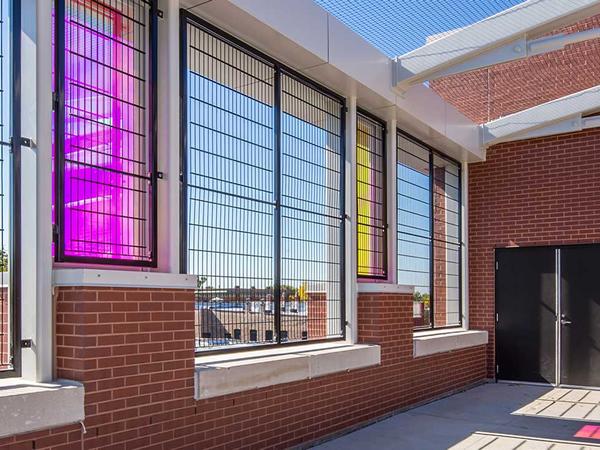
Established in 1871, the Abraham Lincoln Elementary School has been an integral part of Chicago's Lincoln Park community for over 135 years. The school is committed to providing innovative learning experiences and offers several advanced educational programs focused on language, mathematics, technology and green initiatives.
The school has grown rapidly alongside the community, and was first expanded in 1894, and again in 1937. In 2013, another expansion project was proposed, as the school was home to over 800 students, with an ideal capacity of only 650 students.
Chicago based architects Muller+Muller were selected to lead the expansion project, and were immediately faced with a unique challenge. The school is located in one of Chicago's landmark districts, which means that the city imposes guidelines to preserve the architecture and historical significance of the area.
With this in mind, Muller+Muller architects set out to design the new wing as an extension of the original building, with a distinct modern touch.
To achieve their design goals, materials used on the original building including, brick, terra cotta, limestone, and dark bronze were matched. However, to add a modern flair, architectural dichroic glass was added to the structure as a way to highlight the rooftop play area, a key feature of the new annex.

Project Details
- Location: Chicago, IL
- Application: Exterior Glazing, Dichroic Glass Architecture Facade
- Market/Industry: Education
- Type of Glass: Dichroic Laminated Glass
"The dichroic glass added a playfulness to the façade and the children’s play area by rendering a vibrant array of colors onto it’s many exterior surfaces."

Dichroic glass is laminated with 3M dichroic film, creating a unique product that transmits and reflects light, and produces a brilliant color shift when viewed at different angles.
Nicholas Micheels, an architect on the Muller+Muller project team, explains why dichroic laminated glass was chosen as “it added a playfulness to the façade and the children’s play area by rendering a vibrant array of colors onto it’s many exterior surfaces”.
Once complete, the architectural dichroic glass facade serves a dual purpose, adding intrigue when viewed from the street level and a colorful, whimsical appeal to the children’s play area.
Nicholas enjoys working with dichroic glass as it “behaves in a way that doesn’t immediately make sense, one pane of glass can yield different results based on where you observe it from. This makes the user experience much more engaging and full of color”.

